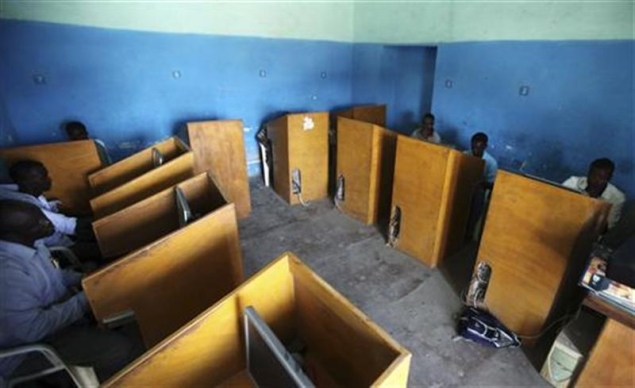- Home
- Internet
- Internet News
- MiniFlame virus is Flame's smaller, more dangerous cousin
MiniFlame virus is Flame's smaller, more dangerous cousin

While the original Flame virus swept in data from perhaps 5,000 computers, largely in Iran and Sudan, the new miniFlame struck only about 50 "high-value" machines, according to Kaspersky Lab research published on Monday. Iran had previously blamed Flame for causing data loss on computers in the country's main oil export terminal and Oil Ministry.
"Flame acts as a long sword for broad swipes while miniFlame acts as a scalpel for a focused surgical dissection," Roel Schouwenberg, a senior researcher at Moscow-based Kaspersky Lab, told Reuters.
Kaspersky theorized that miniFlame was distributed mainly by Flame and another recently discovered spyware program, Gauss, which was most prevalent in Lebanon and may have been aimed at tracking financial transactions.
Not much is known about miniFlame's victims, except that they were more geographically dispersed than those of Flame and Gauss. Infections were found in Lebanon and Iran most of all but also in the Palestinian Territories, Iran, Kuwait, and Qatar, according to Kaspersky.
Kaspersky and U.S. security software company Symantec Corp have said that some of the code in Flame also appeared in an early version of Stuxnet. Found in 2010 and aimed at Iran's nuclear enrichment program, Stuxnet is sometimes described as the first true cyber-weapon. Cyber experts widely believe Stuxnet is an American project.
Kaspersky and Symantec said in a joint research paper last month that Flame's control software remotely directed a number of smaller programs, and that the effects of only one of those programs was clear.
Symantec said at the time the overall project "fits the profile of military and intelligence operations," in part because encryption kept some operatives in the dark about what data they were taking from infected machines.
The many technological innovations in Flame included its hijacking of Microsoft Corp's Windows Update feature, which is critical for keeping the operating system current as new security problems come to light.
The new discovery concerns one of the smaller programs controlled by the Flame command software, referred to in the original code as SPE.
According to the Kaspersky analysis, it includes a "back door" allowing for remote control, data theft and the ability to take screen shots or images of the computer screen as the user engages with Microsoft Office, Adobe Systems Inc's Reader, web browsers, and other applications.
"MiniFlame is installed in order to conduct more in-depth surveillance and cyber-espionage," Kaspersky Chief Security Expert Alexander Gostev said.
Symantec said on Friday it had no new information on Flame or the related programs.
Kaspersky said that miniFlame worked with Flame and Gauss but could also operate independently of both, taking orders from a separate network of command computers. It said the new discovery makes a stronger case for the connection among all the programs, though it has not accused any party of authorship.
Kaspersky said it found six versions of miniFlame, the most recent created in September 2011. Some of the protocols it used dated to 2007, making it a long-running effort.
MiniFlame responded to a series of commands given Anglo first names by the program authors. "Elvis" created a process on an infected machine and "Barbara" took a screen shot. "Tiffany" directed the computer to a new command server.
In a speech on Thursday, U.S. Secretary of Defense Leon Panetta warned that the country could act pre-emptively against imminent cyber attacks that would cause "significant physical damage" or kill U.S. citizens. He said the Pentagon was rewriting its rules for engagement in cyberspace.
Though it has been ramping up its capabilities, the Pentagon has said little in public about what it can do.
Copyright Thomson Reuters 2012
For the latest tech news and reviews, follow Gadgets 360 on X, Facebook, WhatsApp, Threads and Google News. For the latest videos on gadgets and tech, subscribe to our YouTube channel. If you want to know everything about top influencers, follow our in-house Who'sThat360 on Instagram and YouTube.
Related Stories
- Samsung Galaxy Unpacked 2025
- ChatGPT
- Redmi Note 14 Pro+
- iPhone 16
- Apple Vision Pro
- Oneplus 12
- OnePlus Nord CE 3 Lite 5G
- iPhone 13
- Xiaomi 14 Pro
- Oppo Find N3
- Tecno Spark Go (2023)
- Realme V30
- Best Phones Under 25000
- Samsung Galaxy S24 Series
- Cryptocurrency
- iQoo 12
- Samsung Galaxy S24 Ultra
- Giottus
- Samsung Galaxy Z Flip 5
- Apple 'Scary Fast'
- Housefull 5
- GoPro Hero 12 Black Review
- Invincible Season 2
- JioGlass
- HD Ready TV
- Laptop Under 50000
- Smartwatch Under 10000
- Latest Mobile Phones
- Compare Phones
- Moto G15 Power
- Moto G15
- Realme 14x 5G
- Poco M7 Pro 5G
- Poco C75 5G
- Vivo Y300 (China)
- HMD Arc
- Lava Blaze Duo 5G
- Asus Zenbook S 14
- MacBook Pro 16-inch (M4 Max, 2024)
- Honor Pad V9
- Tecno Megapad 11
- Redmi Watch 5
- Huawei Watch Ultimate Design
- Sony 65 Inches Ultra HD (4K) LED Smart TV (KD-65X74L)
- TCL 55 Inches Ultra HD (4K) LED Smart TV (55C61B)
- Sony PlayStation 5 Pro
- Sony PlayStation 5 Slim Digital Edition
- Blue Star 1.5 Ton 3 Star Inverter Split AC (IC318DNUHC)
- Blue Star 1.5 Ton 3 Star Inverter Split AC (IA318VKU)

















